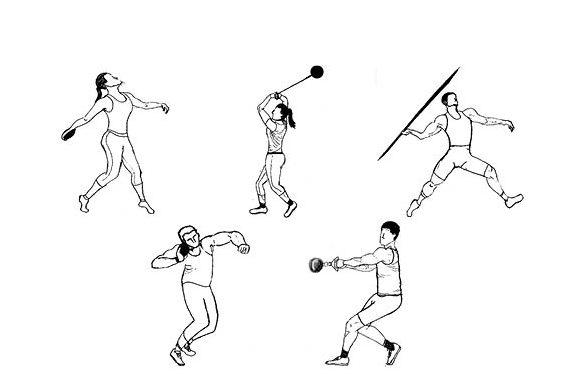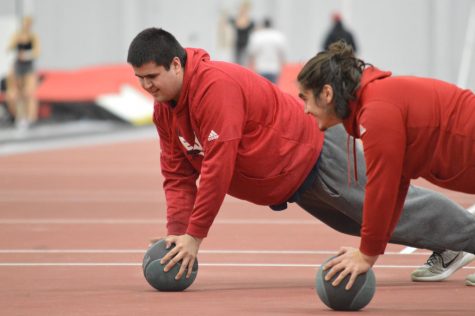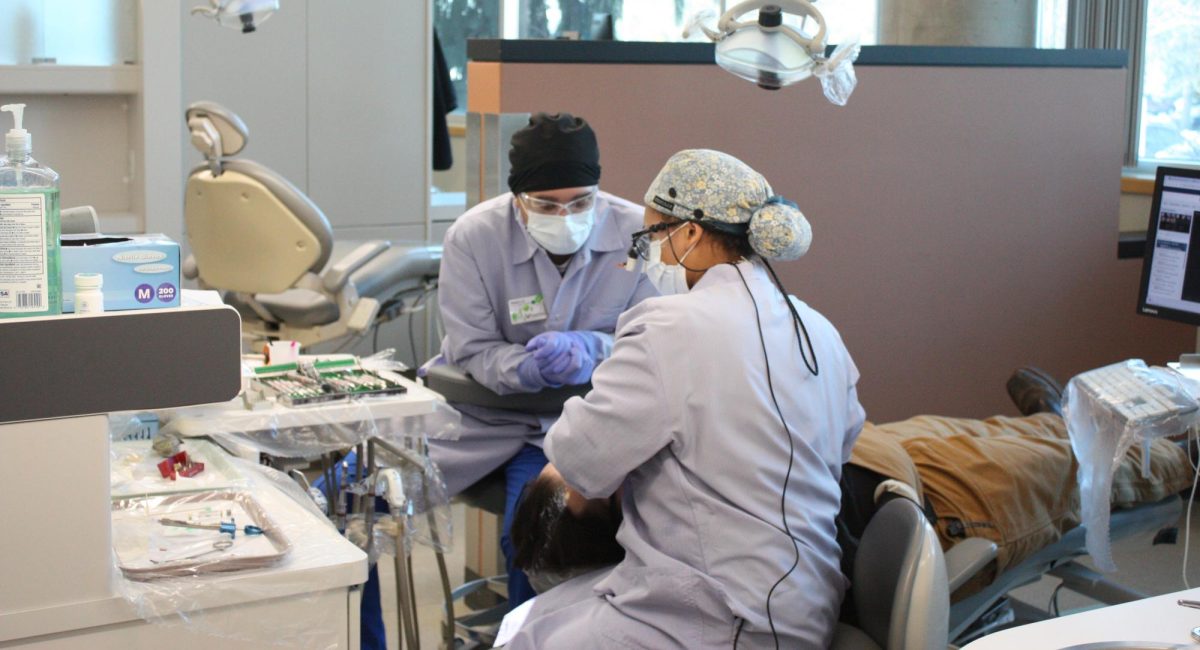A good throw comes from below
A closer look at throwing events and athletes at EWU

Sketches of the five different throws in track and field.
January 25, 2019
Many track and field athletes participate in a multitude of events that test all physical abilities, including running long distances, sprinting and jumping. While it’s obvious that the strength to succeed in those disciplines would come from the legs, it may not be as clear that the legs are also key in a fourth sector—throwing.
There are five different throwing events that the track and field team competes in: discus, javelin, shot put, weight throw and hammer. Both men and women participate in all five. There are 15 women throwers and 11 on the men’s side.
Garrett Peoples, a freshman who does shot put, hammer and discus talked about the exercises he does to train.
“We (work out) a lot of legs,” Peoples said. “Legs is probably the main thing that we hit every time…a lot of squats, cleans, snatches and deadlifts.”
Snatches are designed to work the upper leg with an emphasis on the thighs. The starting position is the same as a clean, but when users pick up the barbell, they quickly move into a squat position and push the barbell above their head. They then slowly stand up with the barbell still extended above.
“All the throws are really lower body,” women’s head coach and throw coach Marcia Mecklenberg said. “In the weight room we do a lot of the Olympic lifts, especially the cleans. We’ll also do a little bit of snatch … for explosiveness.”
Cleans are also focused on the quads, hamstrings and glutes. Participants begin with a barbell on the ground in front of them, and in one movement pick the barbell up and turn so that it is even with the shoulders.

Left to right: Throwers freshman Garrett Peoples and junior Jonny Law work their cores in training on Jan. 17. Peoples has the top mark in the shot put for EWU this year with a 16.01 meter throw in the Lauren McCluskey Memorial Open on Jan. 12.
Emma Chappell is in her second year on the EWU track team after transferring from Concordia University in Portland, Oregon. She focuses solely on javelin, and stressed the importance of shoulder and foot quickness conditioning in regards to her discipline.
“To train for meets, it’s a lot of dynamic warm-ups,” Chappell said. “We need to have our muscles ready. Shoulder especially, that’s most important. We do a lot of quick feet drills and powerful core workouts … We do a lot of quick bench press, so (a) speedy close grip bench press. We’ll do extra work with bands where it’s a lot of fast movements and stability exercises.”
Chappell noted that the training at EWU is different from her experience doing track for Concordia.
“At (Concordia) it was a lot more strength based instead of flexibility and mobility,” Chappell said. “The strength was great but I wasn’t able to perform (my) best because I had a lot of slow muscle instead of fast twitch, so the training here definitely has improved my technique and form by creating fast twitch muscles instead of slow twitch.”
According to Mecklenberg, the training for shot put and discus is the most similar of the five events, but their level of correlation depends on the technique the athlete uses.
“Depending on the technique, it’s even more similar,” Mecklenberg said. “If there’s spin in the shot put, it’s very similar to the spin in the discus. If they’re a glider, that technique is a little more different from the discus, but it’s still the same as far as (when) they hit their final position.”
Mecklenberg added that hammer requires different technique from the other three events.
“Hammer is totally different from them all,” Mecklenberg said. “You’re trying to push the ball, whereas the other three you’re trying to pull and create separation. That’s not something you want to do with the hammer.”
When the throwers are practicing, the main technical focus is finishing in a square and closed position in alignment with the throwing ring.
“The thing that we talk about the most, especially for discus, javelin and shot put, is landing closed,” Mecklenberg said. “When you hit your final position, you want to be squared to the back of the ring. You don’t want your upper body to be sideways, you want it to be back. We stress that a lot. In the hammer, we (stress) waiting for the ball, so you’re not pulling the ball, but the ball is pulling you across the ring.”
The biggest similarity between the four events, according to Mecklenberg, is the rhythm that athletes must strive for in being consistent and correct in form.
During the indoor season throwers only compete in shot put and weight throw. The other events start in the outdoor season. EWU’s next meet is in Seattle at the University of Washington Invite Jan. 25-26.







